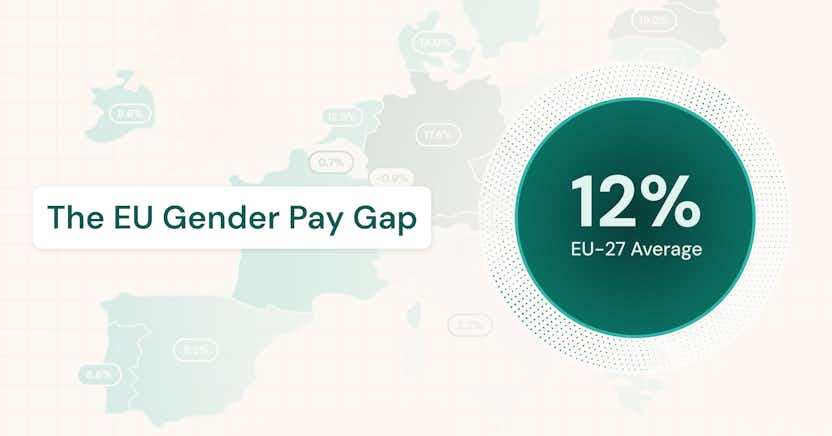What Is Wage Compression?
Wage compression, also known as salary or pay compression, occurs when employees with less experience or shorter tenure are paid nearly the same as those with more experience, seniority, or responsibilities. This typically happens when new hires are brought in at higher salaries due to market pressures, while existing employees’ pay has not kept pace.
Although wage compression is generally the result of well-meaning efforts to attract needed talent, it can create frustration, reduce morale, and lead to retention issues if left unaddressed. Understanding its causes and proactively managing compensation structures is essential to maintaining internal equity and a motivated workforce.
Why is wage compression important?
Unchecked wage compression can have significant implications for organizations. At its core, it undermines the integrity of compensation systems. When experienced employees see less-experienced peers earning similar or higher salaries, it can lead to dissatisfaction, disengagement, and ultimately attrition.
The risk extends beyond morale. Wage compression can distort performance incentives, complicate career progression planning, and create reputational risks—especially when disparities are discovered by employees through informal networks or public pay transparency.
In a broader organizational context, wage compression challenges the principles of pay equity and performance-based reward. It may also have financial consequences, as it can lead to higher turnover and increased replacement costs, particularly in roles with specialized skills or institutional knowledge.
What causes wage compression?
Wage compression can result from a variety of organizational and external factors. While the most visible cases involve new hire pay overtaking that of incumbents, the root causes are typically systemic.
Some common contributors include:
- Rapid labor market shifts: Sudden increases in market-rate pay, particularly in high-demand roles or industries, can lead to inflated starting salaries.
- Lack of salary adjustment mechanisms: Without structured processes to review and adjust salaries regularly, incumbent employees’ pay can stagnate relative to market trends.
- Fixed compensation bands: Rigid pay ranges or outdated job architectures may not allow flexibility to differentiate pay based on tenure, experience, or performance.
- Budget constraints or freezes: Organizations facing financial pressures may prioritize external hires to fill critical gaps while limiting merit increases internally.
- Decentralized hiring practices: Hiring managers negotiating compensation without centralized oversight may inadvertently create compression.
Technology-enabled compensation planning can help surface these conditions earlier, allowing for corrective adjustments.
Why do organizations need to manage wage compression proactively?
Wage compression often develops gradually but can have cumulative effects that are difficult to reverse. Without intervention, it can degrade employee trust in the fairness and transparency of compensation systems.
Managing wage compression proactively helps to:
- Preserve internal equity and morale.
- Retain high-performing and experienced employees.
- Support consistent and defensible compensation decisions.
- Protect against reputational and legal/compliance risks related to equity and fairness.
- Align compensation strategy with business performance and workforce planning.
From a compliance perspective, wage compression can also intersect with regulatory concerns. In regions with pay transparency laws or mandatory pay reporting, compression patterns can draw attention from regulators or the public.
Who is affected by wage compression?
Wage compression can impact a wide range of stakeholders within an organization:
- Employees: Those with longer tenure or greater responsibilities may feel undervalued, especially when they discover compensation inconsistencies.
- Managers: Compression complicates reward decisions and may weaken performance management efforts if financial recognition is misaligned.
- HR and Compensation teams: These teams must reconcile market competitiveness with internal equity, often under tight budget constraints.
- Finance leaders: Wage compression can distort compensation cost projections and necessitate unplanned adjustments.
- Executives and board members: Persistent wage compression can affect strategic workforce initiatives, diversity goals, and ESG reporting outcomes.
Ultimately, wage compression is not a localized issue; it affects organizational culture, cost management, and workforce stability.
How does wage compression compare to other compensation issues?
Wage compression is distinct from, but related to, other compensation phenomena:
- Pay inequity occurs when two employees performing the same work are paid differently based on non-job-related factors such as gender or race. While compression may lead to inequity, the two are conceptually separate.
- Pay inversion is a more extreme form of compression, where a less experienced or lower-level employee earns more than a more senior colleague.
- Salary stagnation refers to a lack of pay growth over time, which can be a contributor to compression but is not synonymous with it.
Addressing compression often requires different levers than correcting inequity, though both benefit from centralized compensation analytics and governance.
How can organizations detect and measure wage compression?
Early detection of wage compression depends on access to reliable, up-to-date compensation data. Organizations can use a mix of quantitative and qualitative indicators to assess compression risk.
Key diagnostic steps include:
- Internal pay range analysis: Comparing salaries across roles, levels, and tenure to identify narrowing differentials.
- New hire versus incumbent pay: Tracking offers made to new hires against current employee pay in similar roles.
- Performance-pay alignment: Reviewing whether high performers are adequately differentiated in compensation.
- Benchmarking: Using market data to assess whether internal salary structures are lagging external trends.
- Employee sentiment surveys: Capturing perceptions of fairness and transparency in pay decisions.
Technology platforms that integrate job architecture, performance data, and market benchmarks make these analyses more efficient and actionable.
What are best practices for addressing wage compression?
Addressing wage compression requires deliberate and often organization-wide action. Effective strategies go beyond one-time pay adjustments and instead focus on sustainable compensation design.
Recommended practices include:
- Conduct regular compensation reviews to detect compression early and provide timely interventions.
- Establish merit-based salary increase guidelines that reflect performance, skill development, and tenure.
- Implement centralized compensation governance to ensure consistency across departments and geographies.
- Integrate market data into salary planning so that offers and increases reflect real-time conditions.
- Design flexible salary bands that allow for meaningful differentiation between roles and levels.
- Communicate pay philosophy transparently so employees understand how compensation decisions are made.
Technology platforms that offer compensation planning, pay equity analysis, and real-time reporting can help operationalize these practices across large or complex organizations.
Frequently asked questions about wage compression
- Is wage compression always bad?
Not necessarily. In some cases, it may reflect a flattening of organizational hierarchy or evolving job architectures. However, when it leads to disengagement or perceived unfairness, it becomes a problem that requires action. - How often should companies review for wage compression?
At least once a year. Ideally, organizations should monitor compression risks continuously, especially during periods of rapid hiring or market volatility. - Can compression occur in unionized environments?
Yes, particularly when pay scales are tightly structured and do not adjust quickly to market shifts. However, unions may also advocate for adjustments to address compression. - What is the role of pay transparency in preventing wage compression?
Greater transparency can reduce the likelihood of hidden compression and encourage accountability. However, it also increases the risk of employee dissatisfaction if compression is discovered but not addressed. - Does addressing compression require increasing everyone’s pay?
Not always. Solutions may include targeted adjustments, changes to job structures, or rebalancing compensation budgets. Broad increases are sometimes necessary but must be financially sustainable. - What data is most useful for analyzing compression?
Key inputs include employee tenure, job level, performance ratings, market benchmarks, and salary history. A centralized compensation platform can consolidate these data points for deeper analysis.
Summary
Wage compression is a growing challenge for organizations facing competitive talent markets and rising compensation expectations. While often driven by external forces, it is within the control of Compensation and Benefits leaders to manage and mitigate its effects. With proactive monitoring, equitable pay structures, and data-informed planning, organizations can preserve fairness, support retention, and protect the integrity of their compensation strategies.






